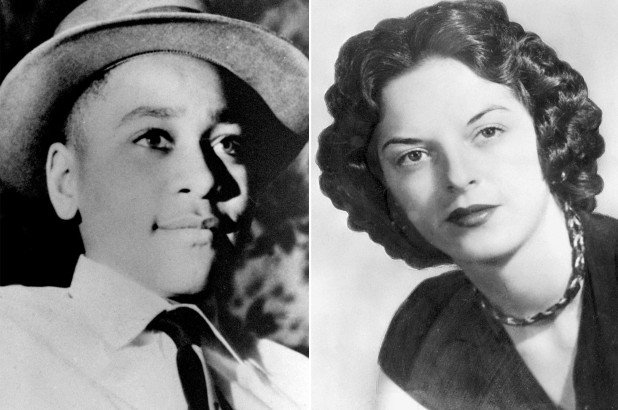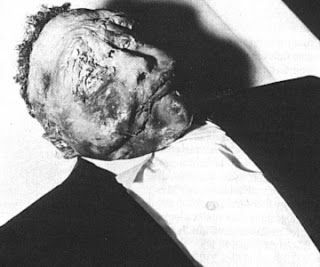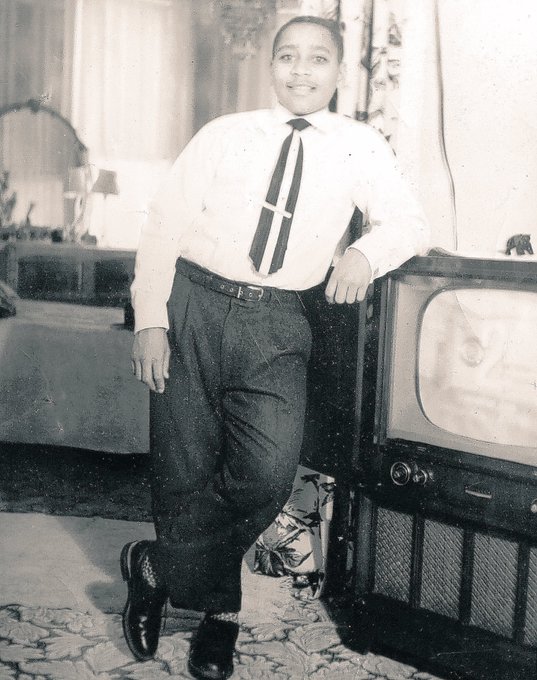
Carolyn Bryant Donham, the woman 14-year-old Emmett Till was accused of flirting with which resulted in his death in 1955, recanted her statement years after Till was murdered. On the morning of August 24, 1955 Till was accused of whistling and flirting with a white woman. Four days later, Till was taken from his home and killed. Roy Bryant, Donham’s husband at the time, and his half-brother J. W. Milam were acquitted of the murder, but later admitted to it inan interview with Look Magazine.
Donham was quiet about her role in the murder, which eventually went on to spark the Civil Rights movement. However, in 2007 she spoke with author Timothy Tyson, who published the book The Blood of Emmitt Till. On January 26, 2017, Vanity Fair published the story of Tyson’s interview iwth Donham.
Here’s what you need to know about Donham:
Warning: Some images below may be disturbing to some viewers.
1. Bryant Claims that the Accusations Against Till Were “Not True” & He Didn’t Make Any Advances Toward Her
Donham testified on August 24, 1955 that Till grabbed her hand while he was paying for bubble gum at a store that she owned with her husband Roy Bryant. “How about a date, baby?” she accused him of saying after allegedly grabbing her hand. Her testimony claims that Till had done an “unprintable word” to “white women before.” “I was scared to death,” Bryant said during her testimony.
After delivering her testimony, Judge Curtis Swango ruled that it was inadmissible. However, decades later, Donham told Tyson that this part of her testimony was not true. “That part’s not true,” she told Tyson, reports Vanity Fair. She also told Tyson that she could not remember what else happened in the grocery store that day, but admitted that her testimony was false.
2. The Justice Department is Reopening the Investigation into the 63-year-old Murder of Till
According to a U.S. Justice Department report to Congress, the 1955 slaying was listed in a March report among “activities” the department was pursuing under the 2007 unsolved civil rights crime act that bears Till’s name, CNN reports. The act is paving the way for the department to “expeditiously investigate” unsolved pre-1980 civil rights murders.
“Several interested parties” asked the Justice Department in 2004 whether any surviving suspects could be prosecuted, but after reviewing the information available, the department determined that the statute of limitations prevented any federal prosecution, according to the report. Three years later, a Mississippi grand jury declined to issue new charges, according to CNN.
“The Till case has been re-opened by DOJ based upon the discovery of new information,” the department said in March. It did not elaborate. The department declined to comment on the matter.
3. Till Was Dragged From His Bed, Beaten, Shot in the Head & Dumped in the Tallahatchie River, & His Murderers Were Still Acquitted of the Murder Despite Confessing
After Till’s alleged crime, Bryant and his half-brother J.W. Milam allegedly pulled Till from his bed in the middle of the night, dragged him to the back of a pickup truck and beat him nearly to death before shooting him in the head. They then strapped a 75-pound cotton gin fan to his neck and tossed him in the Tallahatchie River to sink his body.
An all-white jury acquitted Bryant and Milam of the murder barely a month after the incident, despite eyewitnesses identifying the two men at the scene of the crime and the their confessions, according to CNN.
“Deliberations took barely an hour, with one juror claiming the acquittal could’ve come sooner had they not stopped to have a soda,” CNN reports.
Bryant told a reporter how they killed Emmett and dumped his body in the Tallahatchie, but because of double jeopardy laws, they couldn’t be tried again.
4. Donham Approached Tyson to Confess Her Side of the Story Because She Was Writing Her Own Memoir
Tyson told Vanity Fair that Donham approached him because she is writing her own memoirs. The manuscript is being kept at the Southern Historical Collection at the University of North Carolina Chapel Hill library. The public won’t get to read them until 2036, Tyson told the magazine.
Tyson said that she had changed since Till’s murder, but she hasn’t repented. According to Tyson, she won’t go to the Emmett Till Interpretive Center in Sumner, Mississippi.
“She was glad things had changed [and she] thought the old system of white supremacy was wrong, though she had more or less taken it as normal at the time,” Tyson told Vanity Fair.
Bryant told Tyson that she “felt tender sorrow” for Till’s mother, Mamie Till-Mobley, who fought for civil rights and died in 2003.
5. Many People Were Skeptical About Donham’s Confession & Milam’s Wife Reportedly Accused Donham of Fabricating a “Wild Story”
After Look Magazine published Bryant and Milam’s confession, the two were rejected by friends and supporters around the country. According to the Jackson Clarion-Ledger’s obituary of Juanita Milam, Bryant and Milam didn’t feel guilt for killing Till.
Juanita Milam, Milam’s wife, allegedly didn’t believe Carolyn Donham’s story from the beginning. When the FBI re-opened the Till case in 2004, Juanita Milam gave the following comment:
The only way I can figure it is that she did not want to take care of the store. She thought this wild story would make Roy take care of the store instead of leavin’ her with the kids and the store. … the only thing to me would upset her would be if she wanted Roy to stay at the store more.



